
You know what makes great examples of craters in a lab setting? Play sand. Powdered tempera paint. Slingshots. A variety of round projectiles.
It’s going to be a spectacular mess next week.
Discoveries in the Physics & Astronomy shop | Science, curiosities, and surprises

You know what makes great examples of craters in a lab setting? Play sand. Powdered tempera paint. Slingshots. A variety of round projectiles.
It’s going to be a spectacular mess next week.
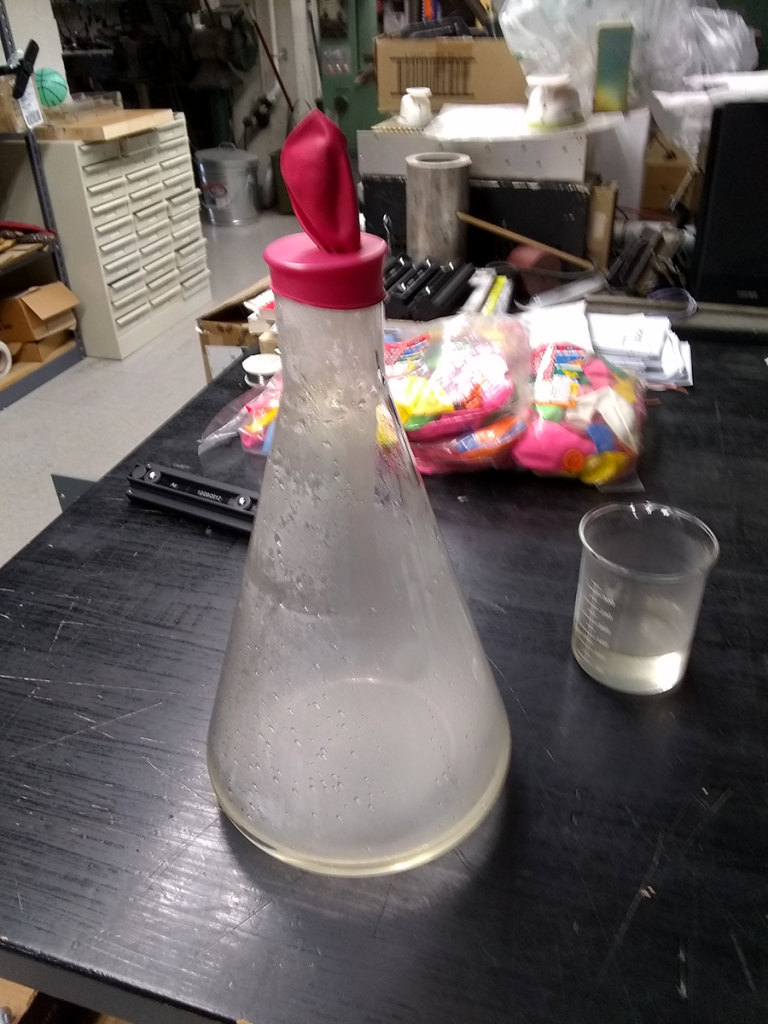
What can you do with a large Erlenmeyer flask, a kettle of boiling water, and a bag of balloons? Science, of course!
Get the flask hot with a pour of boiling water first, then pour out. Add a small amount of boiling water – as hot as can be – and quickly seal with a balloon. We’re looking for steam, and lots of it.
Then wait and see what happens!
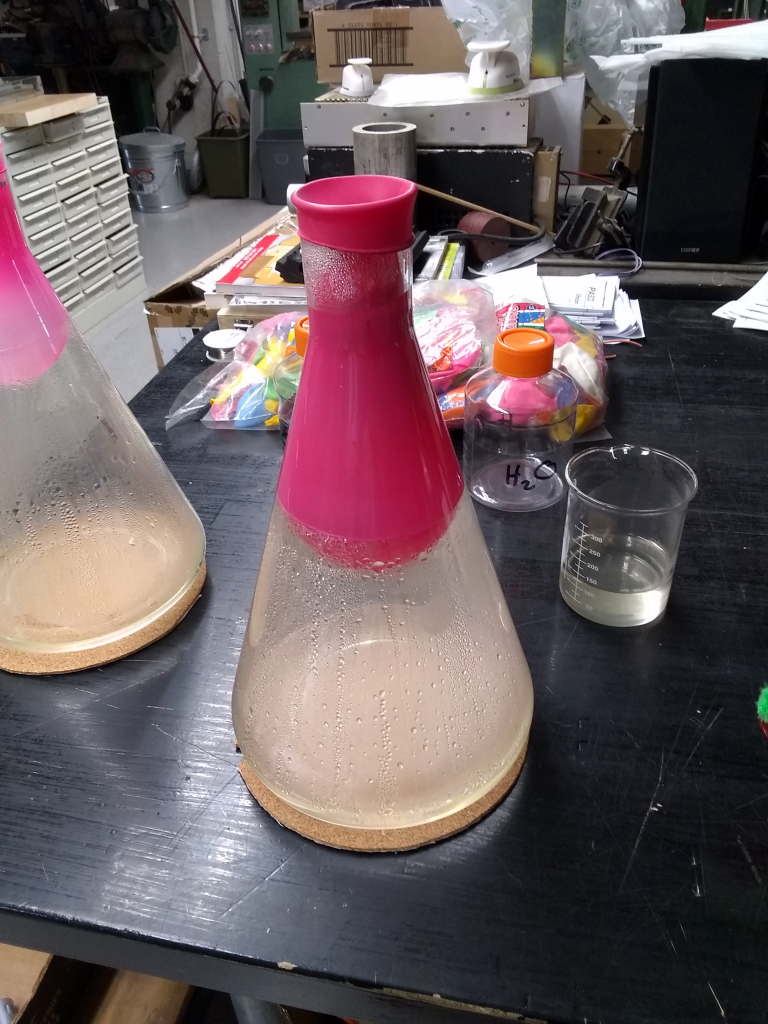
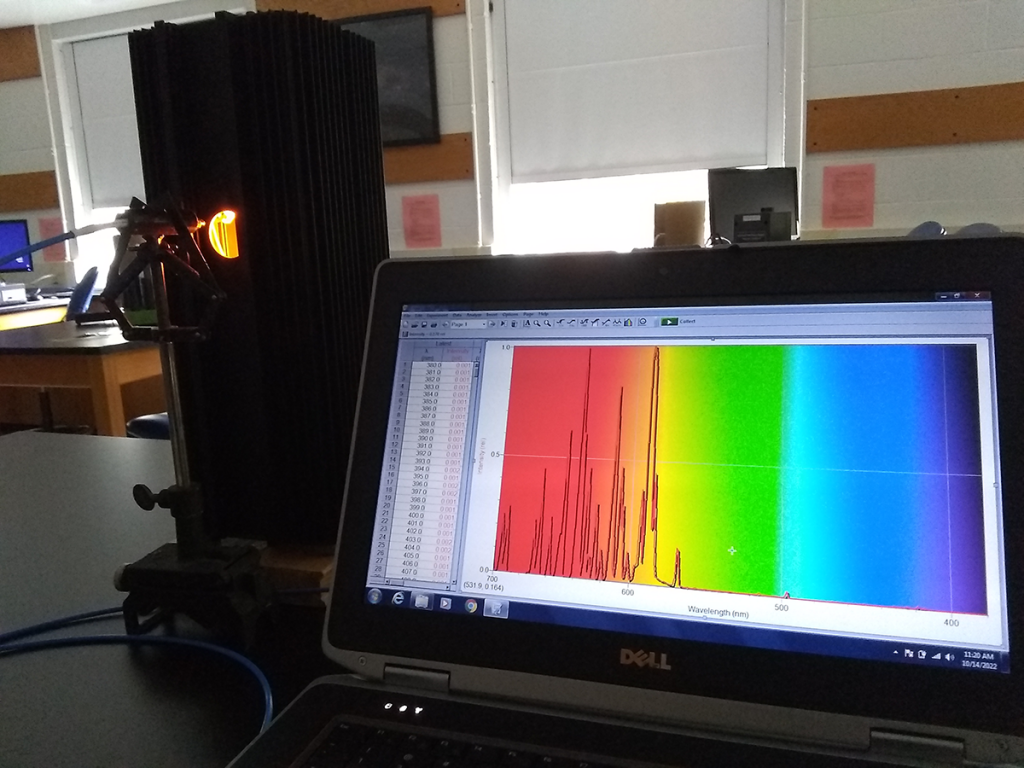
Astronomy is roughly 98% figuring out how to look at stuff better than our eyes can do it.
Gathering more light with large-aperture lenses and reflectors. Gathering more light with long camera exposures. Using detectors for light outside the visible spectrum, from radio waves to gamma rays. Launching telescopes a million miles into space to get away from our pesky atmosphere. Splitting the broadly blended colors we perceive into their component wavelengths.
That last one’s the easiest to accomplish in a student lab setting, and it’s a broadly useful scientific tool across many disciplines. Turns out that certain particular constraints caused by quantum physics make all sorts of other observations possible. Who knew?
Pictured above is a low-pressure sodium lamp, just like the ones that once illuminated nighttime streets around the world with their flattening orange glow. Looks orange to our eyes, but it’s primarily a mix of red, orange, and yellow wavelengths. If you measure those carefully enough, you can discern a certain “fingerprint” on a spectrum of light that would tell you if sodium is or isn’t present in what you’re observing.
Same applies to hydrogen and helium. Nitrogen and oxygen. Argon and neon. Carbon dioxide. Water. Every atom and molecule – including different ionized states, which is a particularly useful bit of information for astronomers – has its own unique spectrum of light it emits. You just need to look at it in the right way.
Even if it’s millions of light-years distant.
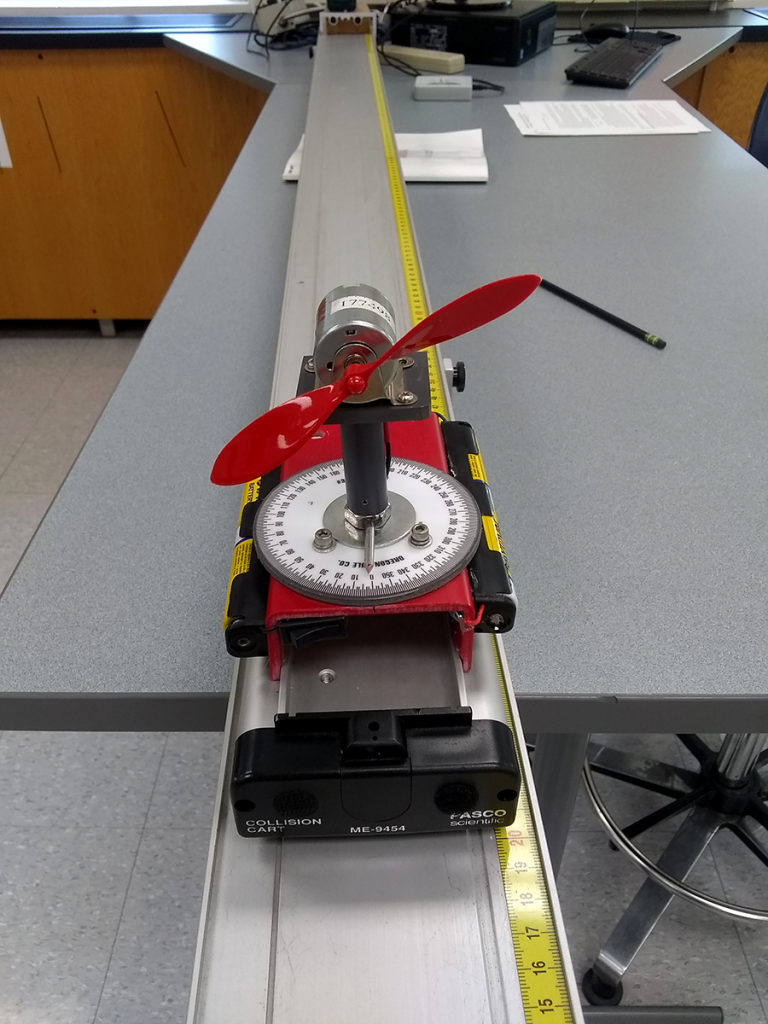
Newton proposed three laws of motion, and it’s the second one that makes for the most interesting labs. Maybe there’s some way to make inertia both fun and educational, but let’s leave the first law for lecture. Equal and opposite reactions are pretty great, but that’s ideal for big demos. Read: rocket launches.
Force, though. Force lets students do stuff and observe what happens. Doing stuff and getting results is how you make physics more interesting.
One tool in our Newton’s-second-law arsenal is the fan cart. An assemblage of a cart with low-friction wheels and a simple DC motor holding a plastic fan. The fan mount pivots, providing variable direction of force. Runs on AA batteries, and is held together mostly with hot glue.
Two very good reasons for the hot glue: 1) When one of these invariably plummets to the floor, the less-than-rigid connections absorb a good deal of the impact when it all falls apart. Usually it falls into pieces, but nothing’s really broken. 2) After one has taken a tumble, it’s mere minutes to get it re-glued and running once more.
The reason for the fan is that it provides a close approximation of constant force, F. If F is constant, and mass (m) is constant, then by F = ma, acceleration (a) is constant, too. Give a running cart a little backwards push – an additional force – and study how its position and velocity change over time. Simple? Sure, and that’s helpful when tying together various concepts.
Relationships between force, mass, and acceleration according to Newton’s second law. Two-dimensional vectors come into play when rotating the fan. Our motion detectors read position, so it’s an illustration of integrals and derivatives underpinning the acceleration, velocity, and position of a moving cart.
The importance of catching a speeding object before it bangs into the end of the track and crashes to the floor.
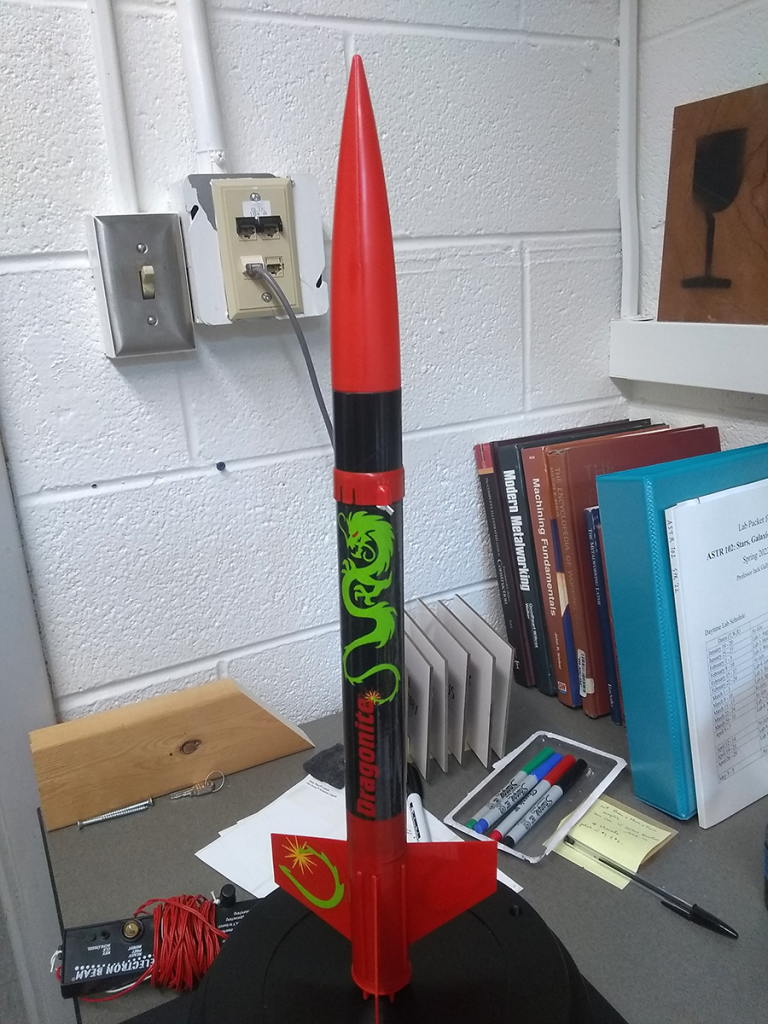
It’s nearly rocket day! Okay, well, it’s nearly time for a physics lecture on momentum conservation – good ol’ Newtonian mechanics – and nothing livens up a discussion of theory and mathematical modeling like making stuff shoot up into the sky. Or, quite possibly, fail to shoot up into the sky, but we’ve been running some advance tests and prepping backup plans because we really, really want things to go zoom.
Zoom, not boom. It’s much more of a hissing zzziiippp than anything else.
The demonstration usually shows three different rockets in succession, each more impressive than the last. The first one, a soda-bottle water rocket, actually illustrates the principle best. Pressurized water shoots out and down, so the rocket moves up. Mass, velocity, terrible aerodynamics. Occasional light spray, so keep your distance.
Then it’s off to model rocket land, with high-velocity solid fuel instead of water. Less mass but at a much, much higher velocity, and in no time that B-size engine has launched the little cardboard-and-plastic rocket high enough to be a speck that’s hard to discern. As long as the weather isn’t terrible, though, a standard B launch is not only recoverable, but entirely possible to catch before it reaches the ground, drifting lazily beneath its parachute.
Scaling on up to a C-size engine, we’ll have our final launch. Bigger engine, more momentum, and even the slightest breeze ensures it’ll drift far beyond our sight and ability to track. Anyone so lucky as to find the rocket afterward can keep it.
If it’s you, maybe stop on by and let us know?
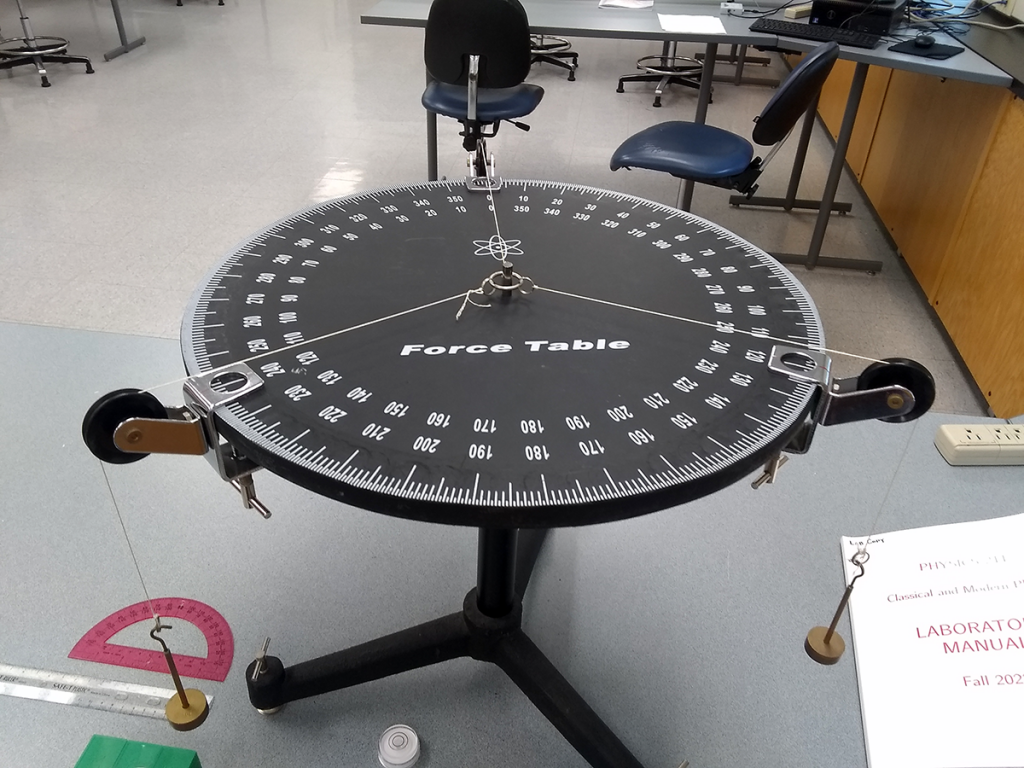
The humble force table. A flat surface, graduated with single-degree marks. Three pulleys which may be clamped at any position. Loops of string connected to a central ring surrounding a post, each of which is pulled by a mass hanger of 50 grams.
Move those pulleys about, slip on some extra masses, and try to keep the central ring from touching the post!
If you’re going by gut intuition (and not just doing the silly trivial 120° spacing with equal masses), be prepared to make mistakes and incremental adjustments. There’s no way you’re nailing this on the first attempt. Slowly making corrections, adding and removing masses, trying to get that central ring to hover just right, it’s fun. Yes, folks, vectors and statics can be genuinely enjoyable.
The students get to explore that, of course, but it’s also an opportunity to learn a bit of Excel. Build your spreadsheet properly, and you can predict the precise angles and masses needed for equilibrium. Set it up and, presto, it works!
As a test, they run it in the opposite direction, too. Set some angles, add some masses, get it to balance. Type those numbers into the spreadsheet, and… it’s not quite right. The math says it’s off, but the ring says it’s fine. Weird! It’s a handy introduction to measurement uncertainty, a tactile illustration of a critical concept.
It’s very cool.
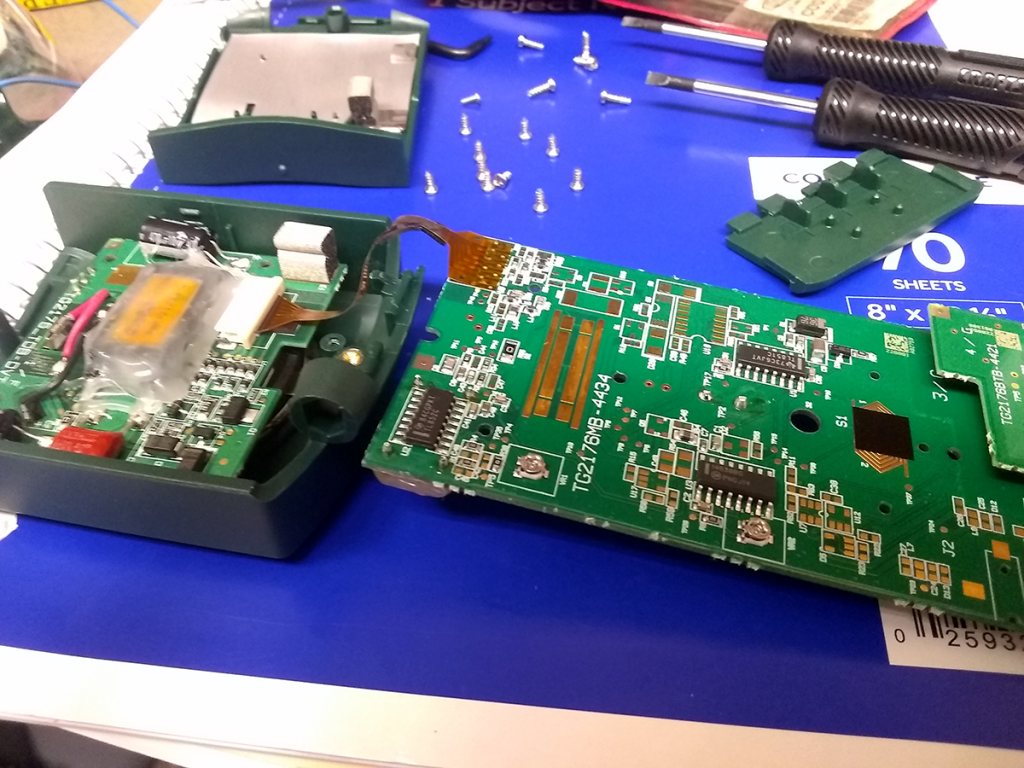
Ah, the printed circuit board. Svelte. Densely packed with teeny marvels of modern electronics. Those parts big enough to be labeled usually require magnification to read the text. The really little ones? It’s not really possible to replace those anyway, so just trust that they’re working as intended.
Until the whole gizmo isn’t working as intended, of course.
When that happens, it’s time to make an assessment of what can be fixed. Sometimes it’s a loose wire. Sometimes it’s a frayed cord, or a bad switch that’s not part of the circuit board itself. Not that these are likely, but it’s best to be thorough.
Assuming you can get the housing open to inspect it. These suckers aren’t built with repairs in mind, given that purchasing a whole new item is less expensive than the cost of labor plus the replacement value of what’s 98% of the whole item. So many tiny screws. So many snap-fit plastic parts. At some point you realize how much thought and effort went into designing this object for quick assembly, and how little went into ease of disassembly.
Pictured above, a faulty motion sensor, has no obvious loose connections or broken parts. It simply fails to collect consistent data, with erratic drop-outs punctuating the signal. Oh, well. Maybe it’s good for parts?
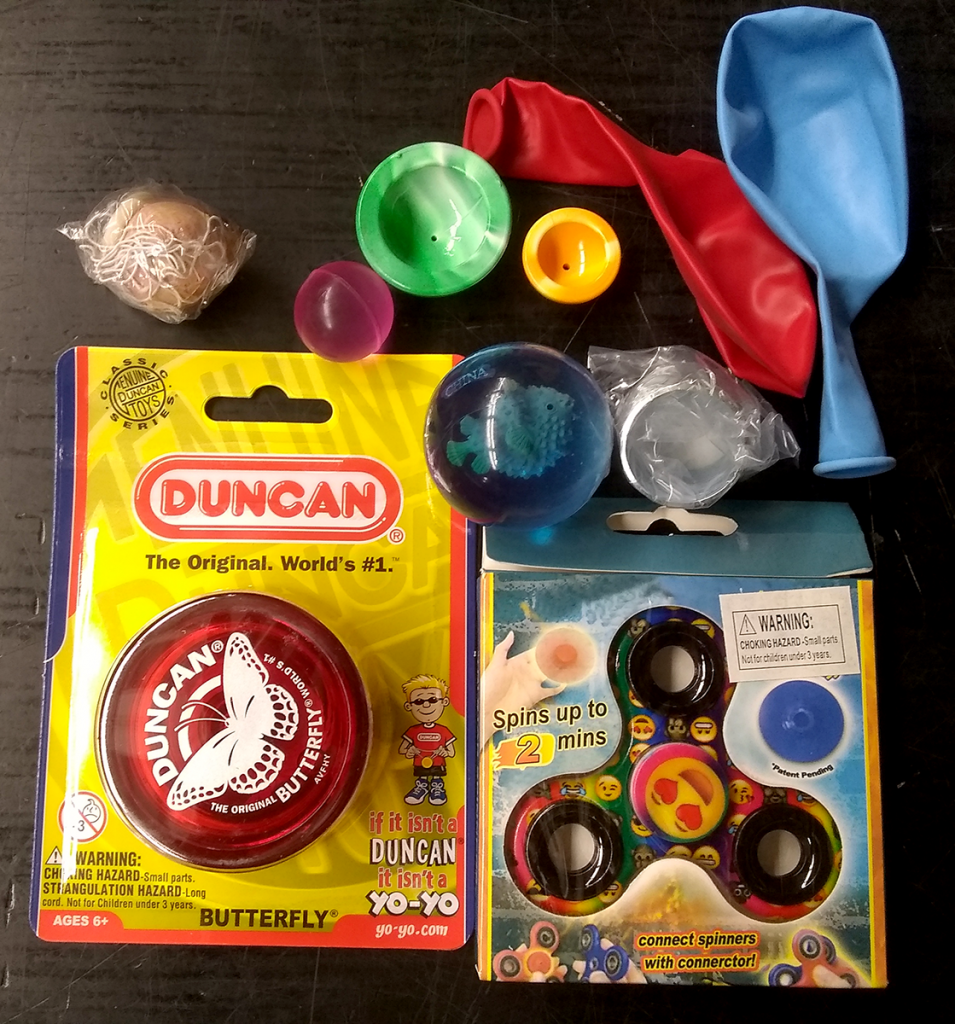
‘Tis the season for PHYS 211 toy kits!
A bag full of goodies for each and every student studying classical and modern physics this upcoming semester. Yo-yo, fidget spinner, bouncy balls (large and small), rubber ball on string, silicone fun poppers (large and small), metal coil spring (not a Slinky, but really it’s a Slinky), and a pair of balloons. Drinking birds and blowguns (not pictured) to be distributed later in the semester.
For those wondering: the big bouncy ball is way better than the little one. Same goes for the fun poppers. The little ones hop a bit, while the big ones bounce all over the shop. You know, for science.
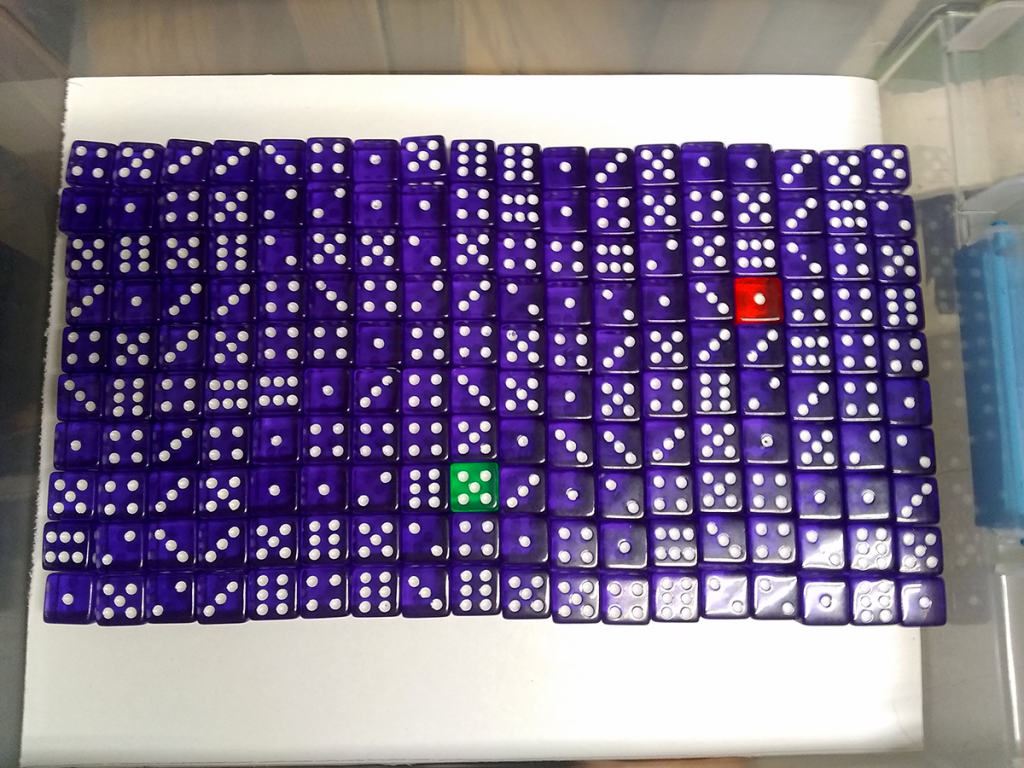
Dice! Bins of colorful dice, each with 178 of one bold color, plus two going their own way. Each bin arrayed in a 10 x 18 or 12 x 15 grid, per the shop tech’s preference at that moment. Beats counting them one by one.
Secure the lid and shake with all your might: you’re simulating radioactive decay! Loudly.
Pick a number from one to six. Say, three. Each die that turns up with three pips after a shake decays, and you remove it from the bin. With 180 dice in there, the chances of getting all threes – or zero threes – is vanishingly small. One-in-six raised to the 180th power, right? As a percentage that’s, what, nearly 140 zeros after the decimal point? Run the numbers, and you can look forward to around one-sixth of the dice in there decaying with each shake. Sometimes more, sometimes less.
You’ll also keep a close eye on those differently-colored dice. One for you, one for your partner. They’re the atoms you’re watching carefully, and unlike the sorta-predictable rolls of a large mass of dice, they’ll decay when they’re good and ready. Could be first, could be never. It’s an illustration of how probability works in systems of different sizes. Of how the random nature of radioactive decay produces a predictability with enough atoms and enough time.
In some idealized version of this experiment, you’d have 30 dice decay on the first shake. Then 25. Then 21. 17. 15. 12. 10. 8. 7. 6. 5. 4. 3. 3. 2. 2. 2. 1. 1. 1. After that… maybe one per shake? (The student experiment stops well before you’re down to a meager handful of dice.) The half-life arrives around four shakes. Every four shakes. Neat!
And should the effect with 180 dice not be enough? Compare your data to the rest of the lab, seeing how each rate of decay is nearly but not exactly the same. Then aggregate the data from all dozen lab benches. 2,160 dice decaying.
Loudly.
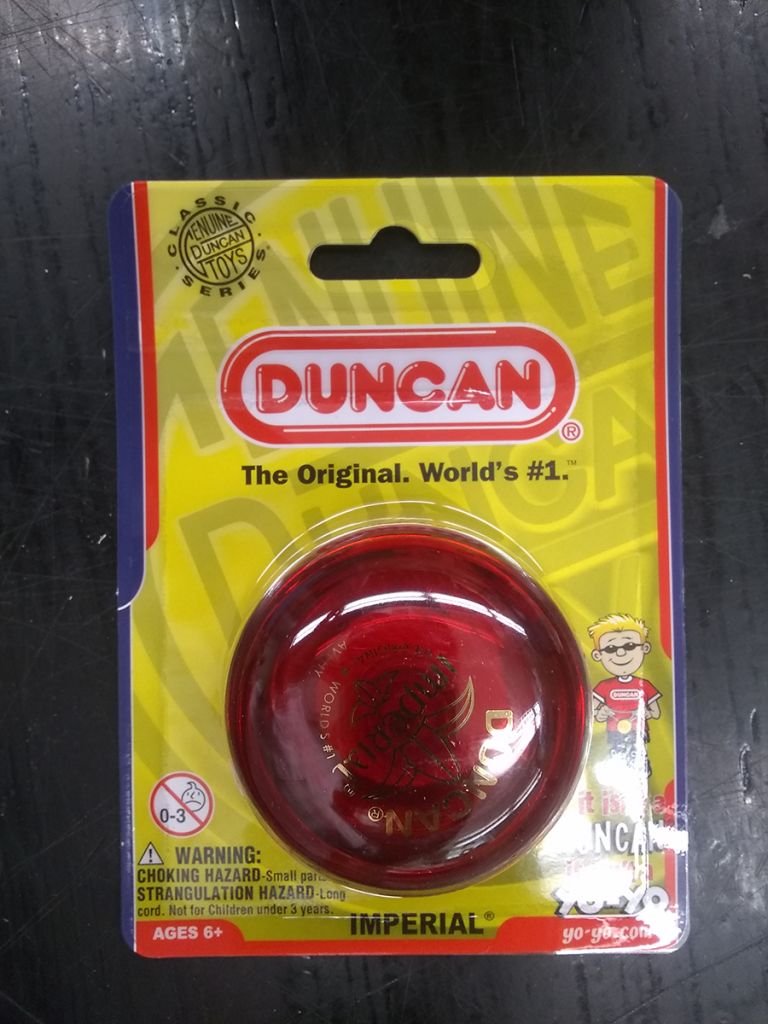
What’s your favorite holiday? Whichever you choose, it’s kind of like that around here, because it’s almost toy kit time! Classical and Modern Physics I – better known ’round here as PHYS 211, or just plain old 211 – gives out a bag full of toys to each and every student. More than three hundred of these are getting ready for distribution.
We do the same for PHYS 212 in the spring, with all sorts of goodies for electricity and magnetism, but in the fall, it’s all about mechanics. Stuff that moves. Toys, exactly like you’d expect them to be. Yo-yos, Slinkys, bouncy balls, blowdart guns, drinking birds, and more.
Always balloons. Every toy kit, every semester, we include balloons. For science. More specifically to help illustrate the principles of physics for homework and problem-solving sessions. What better way to learn than with hands-on experimentation?
Here we have that childhood classic, the Duncan Imperial. Some of the kits will get the Butterfly instead – when you go purchasing hundreds at a time, you take what’s available and fits in the budget – but either way, it’s the return to a certain moment of childhood. At least for the shop techs. If there’s anyone in this world who’s guaranteed to get excited about nifty gizmos, it’s us.
(If there’s anyone in this world who can have serious conversations about the varying quality and potential factors affecting a bouncy ball’s bounce, it’s us. But that’s a topic for another time.)
And, since you were bound to ask: no, neither of us can remember how to do any of our childhood yo-yo tricks. Doesn’t stop us from trying.